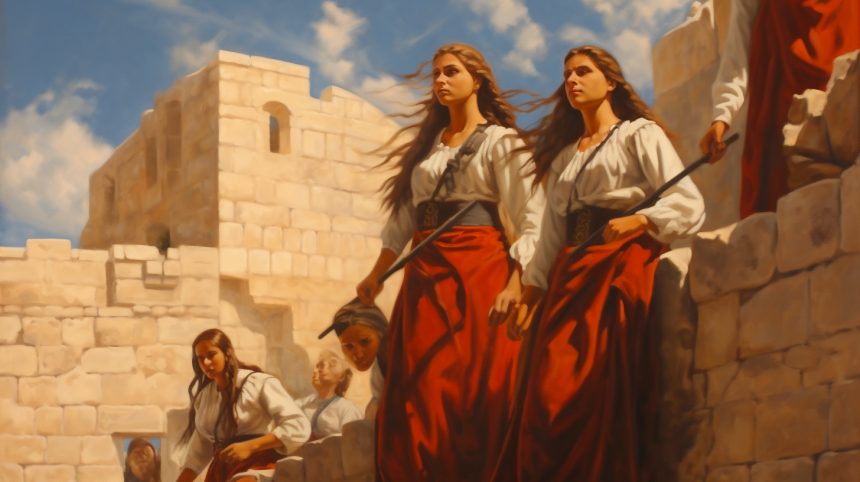Diving deep into Malta’s rich tapestry of history, one cannot help but be enthralled by tales of valiant knights and iconic figures such as Toni Bajada, renowned for his masterful espionage during the Great Siege of 1565. These tales, as gripping as they are, sometimes eclipse the narratives of numerous unsung heroes, particularly the roles of women and children during the Great Siege, whose contributions during were also significant.
Historical accounts of warfare, battles, and conflicts predominantly revolve around male heroes. These tales of bravery and valour, while undeniably important, often inadvertently overshadow the roles of women, relegating their crucial contributions to mere footnotes or, worse, omitting them entirely. Malta’s rich chronicles, filled with tales of courage and determination, unfortunately, follow this trend. Despite the island’s deep-rooted and vibrant heritage, there exists a glaring gap in the dedicated research and acknowledgment of women’s roles and their undeniable impact on the nation’s pivotal moments.
Such omissions not only limit our understanding of the past but also fail to recognise the resilience, adaptability, and sheer tenacity of Maltese women and children. Their roles, sacrifices, and contributions were instrumental in shaping the island nation’s destiny, particularly during its most challenging trials.
The Great Siege of 1565 serves as an illustrative chapter in this context. As the formidable Ottoman Empire set its sights on the Maltese archipelago, it wasn’t just the famed Knights of St. John who rose in defence. As the ominous toll of alarm bells echoed on the 18th of May, families across the island didn’t merely retreat in fear. Instead, they sought strategic positions within the fortified walls of Birgu, Isla, and Mdina. But their role wasn’t limited to finding refuge. Women and children, undeterred by the looming threat, actively engaged in the defence. They not only provided care and support to the wounded but also took up arms, in some cases, using boiling mixtures as deterrents against the advancing Turks.
Furthermore, the island’s youth, though not formally trained for combat, showcased incredible resourcefulness. Boys actively participated in the creation and deployment of makeshift weapons. The “fire hoops” stand out in this regard. These seemingly rudimentary devices, once ignited and hurled, became lethal traps, incapacitating multiple Ottoman invaders simultaneously.
One episode, emblematic of the spirit of the times, centred on the historic town of Mdina. With Ottoman forces inching closer, a potential attack looked imminent. However, the Maltese, in a display of strategic brilliance, had women and boys wear the armour and helmets of soldiers. Their silhouetted figures, positioned strategically atop the bastions and complemented by a deafening barrage of cannon fire, painted a picture of a heavily fortified Mdina. The ruse worked. The Turks, mistakenly perceiving Mdina as an impregnable fortress akin to St. Elmo, opted for a strategic withdrawal, marking a significant turning point in the siege.
These lesser-known tales from Malta’s storied past underscore the pressing need for a more nuanced and inclusive approach to historical recounting. The Great Siege wasn’t merely a chapter of military strategy and knightly valour. It was a collective effort, a triumph shaped by every Maltese individual, irrespective of age, gender, or status.
As we look to the future, it’s vital to ensure that our recounting of the past is comprehensive, recognising and celebrating every contributor to the Maltese narrative. Only then can future generations truly appreciate the collective spirit, unity, and indomitable will that has consistently defined Malta through the ages.
Sources
The role of the Maltese inhabitants during the Great Siege | George Cassar

Leave a Reply